CASE STUDY
❮ ALL CASE STUDIESCLT Modular House Full of the Latest in Tech
Description: Offsite construction of detached properties using cross laminated timber (CLT)
Client: : N-House / Lesko Modular Construction
ThermaSkirt Profile: Deco BMe Electric Heating
Architects: Studio RHE
M&E Consultants: Atelier 10
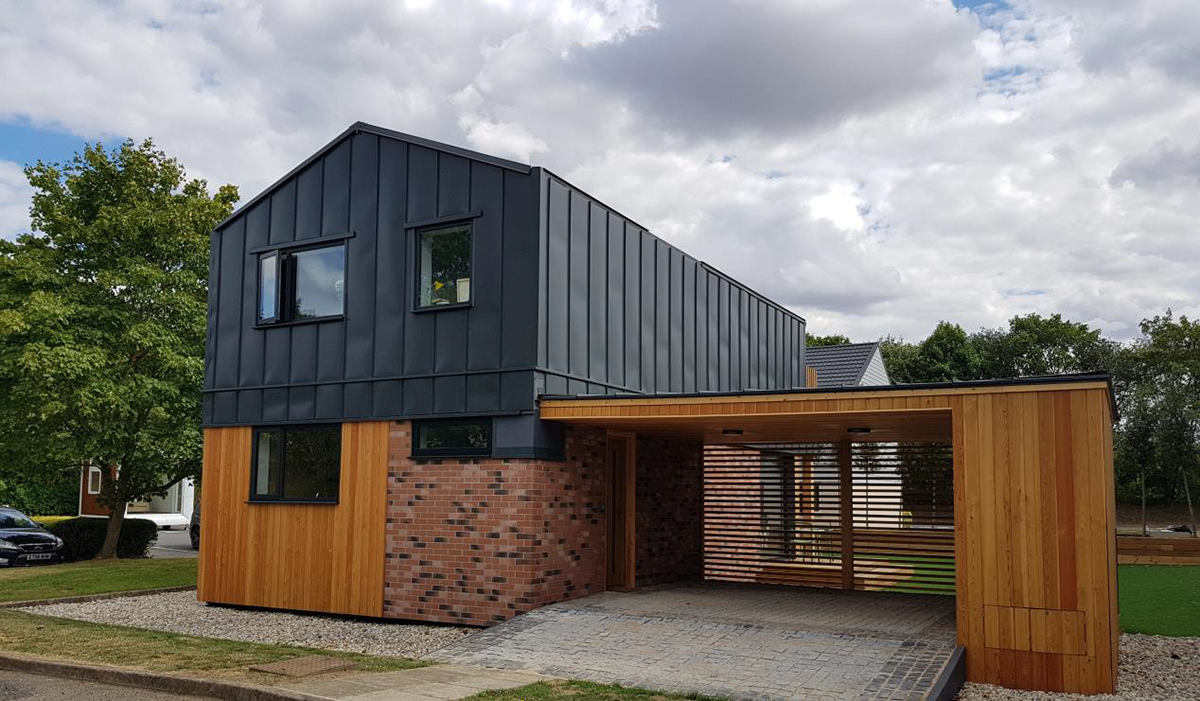
N House Manufacture Modular Houses for both the self builder/ home owner and the developer.
The Challenge
One solution to combat the housing shortage, is ‘off-site’ or modular construction.
This is where, rather than
build houses often in a muddy field, houses are manufactured in clean, dry and well lit factories,
effecttively
on a production line. This has the advantage that the laborforce is located in one place, quality can be
carefully monitored and controlled and assembly can potentially take place around the clock, at all the year.
They are then sent to site on the back of an HGV as ‘modules’ which are then craned and
assembled together to form a 2, 3, 4 bed house, or even a block of apartments. As a result a practically
finished house can be assembled in a matter of days rather than weeks, espcecially if brick-slip
cladding or
other finishes are used.
Just like a car assembly line, each module starts off as a shell, and is assembled into a finished item as parts and components are fitted into it. And just like a car assembly line speed of assembly and ‘right 1st time’ is imperative to keep the line flowing.
In addtion, modular units are limited to a maximum size to enable ease of transportation on a standard vehicle and so internal useable space becomes critical. Coupled with the fact that modular or off-site construction is very much a 21st century technology, somehow panel radiators just didn’t seem to be ‘on message’.
The Solution
Tom Foster from Studio RHE was instrumental in the creation of N House, and was committed to make best use of the light and space that modular manufacturing can offer.
Tom explains
“We were clear that we didn’t feel radiators would be appropriate, both from an aesthetic perspective, but also from a practical point of view; they consume valuable wall space and limit window and furniture positions. We just accepted that underfloor heating would be the recommended heating solution and designed the N House to make the most of the available space. We hadn’t heard of skirting heating”.
The envelope design was then sent to Atelier 10 in London, who specialise in the mechanical and electrical design and specification and have a long association with modular and offsite construction. Jonathan Ward, Technical Director at Atelier Ten, goes on
“We’ve successfully specified ThermaSkirt skirting heating for several modular providers, so we were comfortable putting it forward to N House. Underfloor heating doesn’t really lend itself to modular construction, as the modules often break up the floorplan, making installation and control problematic. N House was an all-electric design, and so we recommended the ThermaSkirt e”.
ThermaSkirt e is the electric version of the successful ThermaSkirt H2O and combines the heating
radiators into a stylish pre-painted skirting board profile – in this instance a simple pencil round ‘Deco’
profile.
Combining the 2 elements in one reduces capital cost, but more importantly simplifies and speeds up
assembly of the modules. By distributing the heating all around the room at low level and ‘above ground’
ThermaSkirt creates an environment practically indistinguishable from underfloor heating, but usually
faster and more responsive and with any floor construction and covering.
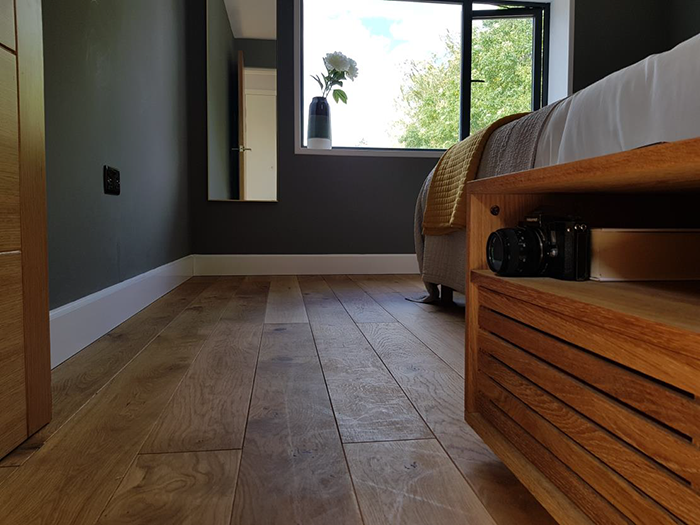
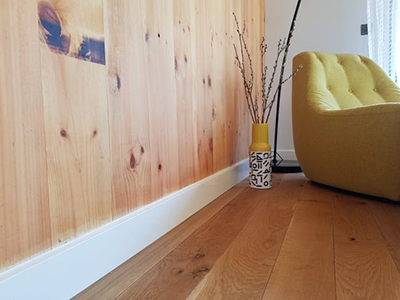
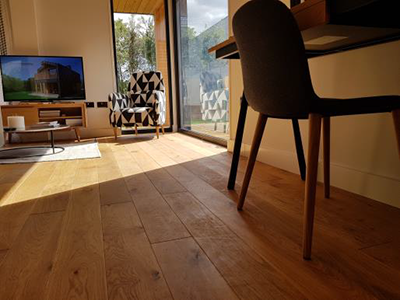
ThermaSkirt skirting heating frees up valuable wall space and works with any floor covering – including wood
The Result
Both N House & Lesko Modular were pleased with the 1st prototype, initially installed by the company as part of their training and support package.
Jack Randall, Project Director at Lesko Modular sums up their findings
"We weren’t sure what to expect, but were pleasantly surprised by the looks and performance of the ThermaSkirt. We quickly identified areas
of improvement in layout and installation, and by working with DiscreteHeat we have managed to streamline
even further the fitting.
By bringing the system in pre-cut and prepared ready for install, our
installers simply have to click the skirting sections onto the wall brackets and connect onto a typical electrical ring
circuit; it’s all very straightforward”
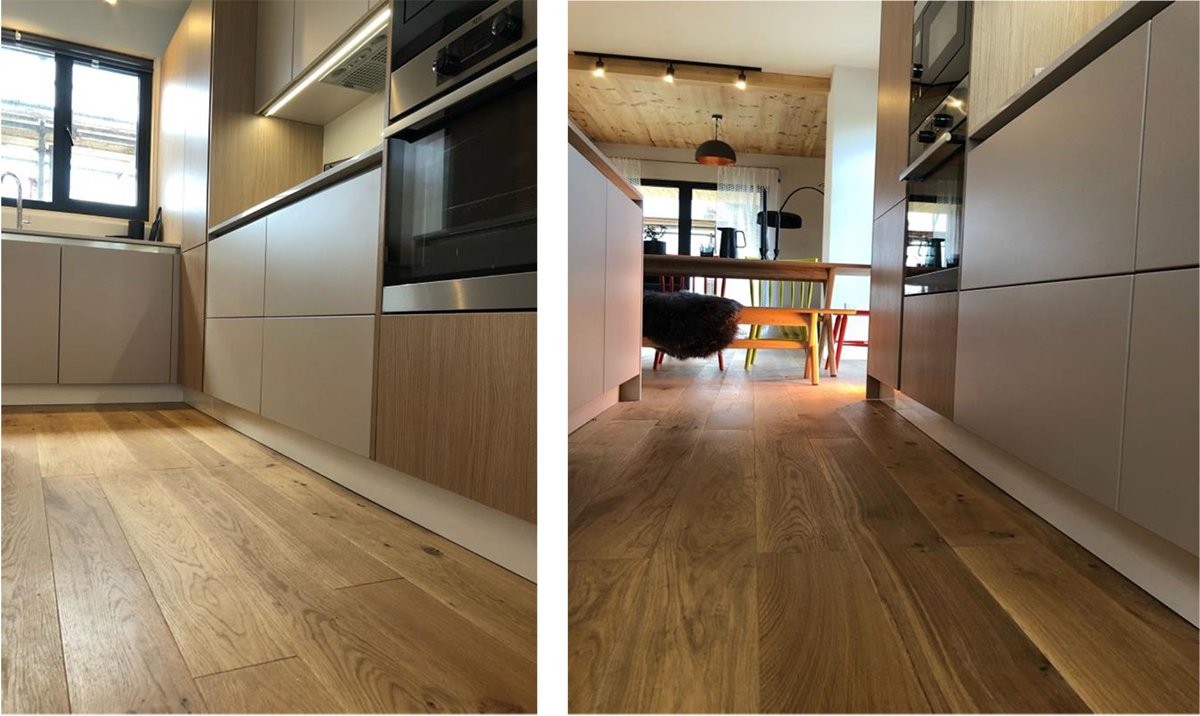
ThermaSkirt can be installed on the kitchen plinths as an alternative to kick space heaters
As a result, ThermaSkirt is now standard specification on the N House design, which can
be configured into many variants including a 4 bed, with additional living space & even an attached garage. The system is
controlled in each room by a digital thermostat which has the option of wi-fi, so it can be activated
from anywhere in the world. Valuable wall and floor space have been saved by eliminating the radiators and as
the N House design has the option of solar PV and battery storage will be very economical to run.
More than 300 units per annum of the N house are in the pipeline.

